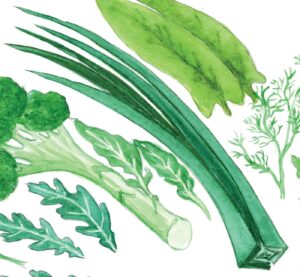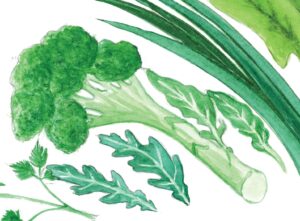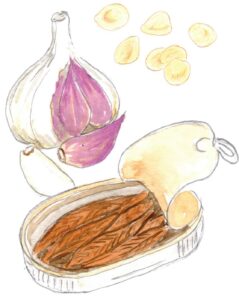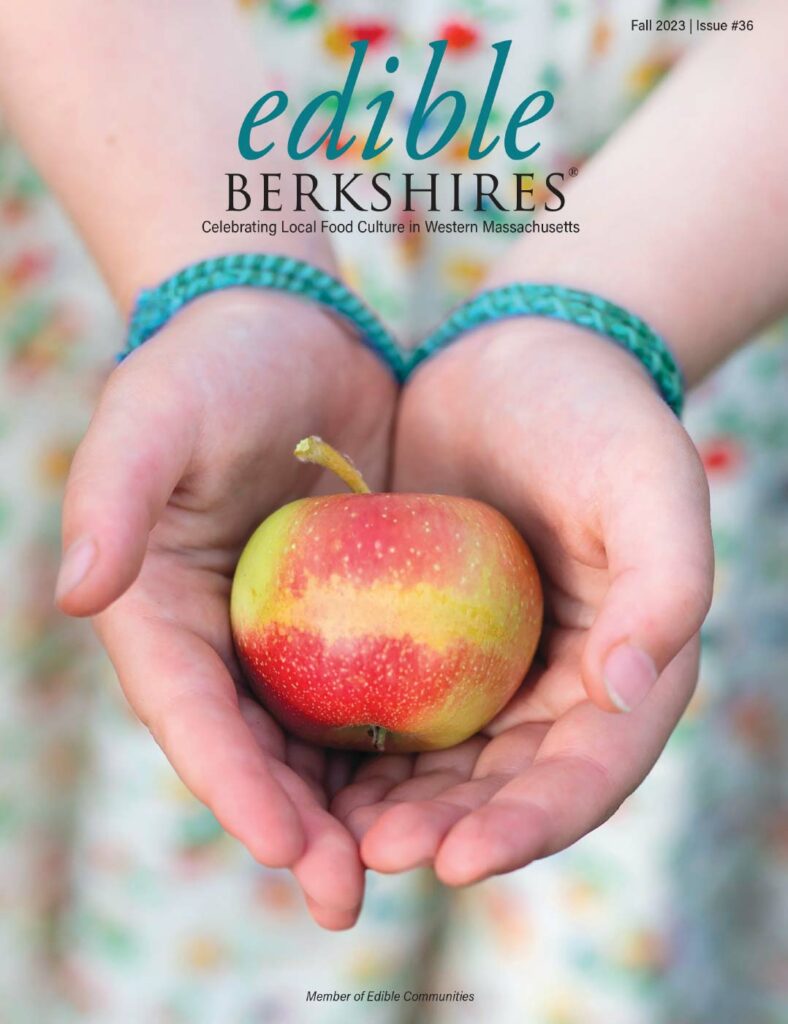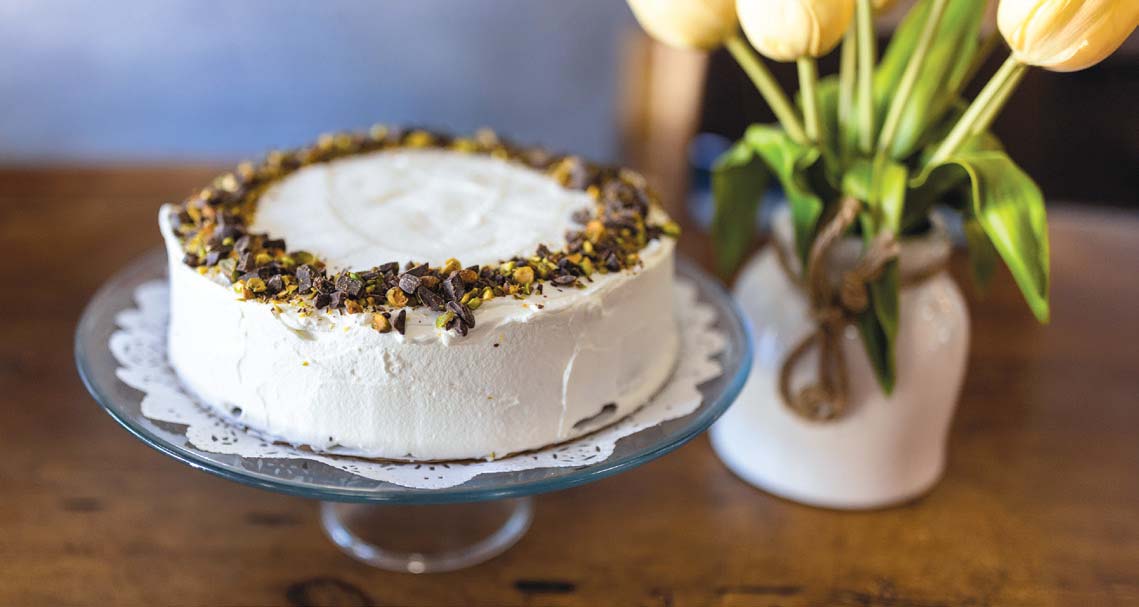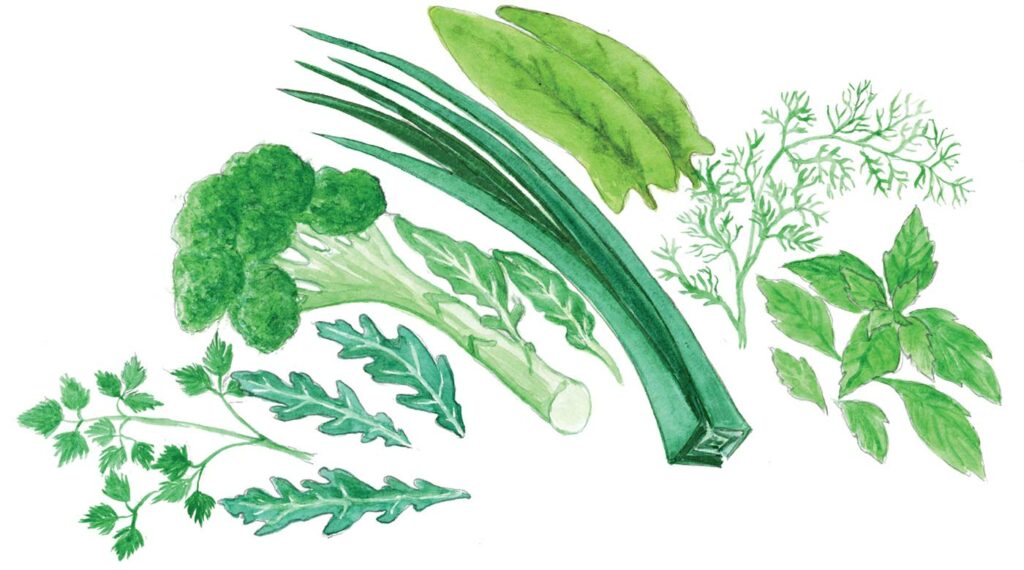
How to make the most of your produce
Perhaps it is because my parents were Depression-era children, but even before I learned that 40% of food in the United States goes to waste, I always found it sinful to throw food away. I try to shop mindfully to minimize such action, and even to garden accordingly (after all, does anyone really need four zucchini plants and what they will produce?)
However, no matter how waste conscious I have become, I still find myself working hard to use everything that fills my produce bin. And even when I use things efficiently, the trimmings add up. Isn’t there anything I can do with the green tops of leeks, or the remainders of basil, parsley, and fresh herbs—a portion of which flavored last night’s dinner—or the trimmings of broccoli and asparagus that go into either the trash or a compost pile? Additionally, between the price of produce and the energy required to grow it and ship it, this waste seems wrong, economically and ecologically.
All of this has led me to attempt to use more of what I bring into the house. The shavings of asparagus are sautéed with butter and used as a filling for an omelet; leftover sautéed cabbage becomes the base for a risotto; and chicken carcasses, leek tops, softening carrots, and fennel stems are simmered for stock.
My search for ways to use these items has taken me from the recipes of Marcella Hazan to the pickling tips of Edna Lewis. I find satisfaction in being more respectful of our foodways and what they provide. As I create salsa verde from leftover herbs to top grilled meat or to toss with shrimp and pasta; turn watermelon rinds into sweet and savory pickles; combine sautéed diced broccoli stems with anchovies, garlic, parmesan, and orecchiette; or add softened leek tops to a quiche or combine them with ricotta to fill ravioli, I find that this effort benefits not only my wallet and the environment, but my palate as well.
